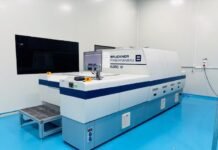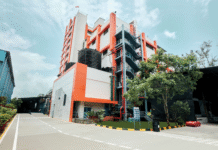Volpak, a Coesia Group company, is a manufacturer of horizontal form-fill-seal machines for flexible pouches. The applications of the flexible pouches are many and can be adapted to any product and industry. Volpak explains how the filling phase works, and why experience is so important to correctly manage the whole process.
A closer look at the pouch-filling process
A lot can happen in 400 milliseconds; in the case of horizontal form fill and seal (HFFS) pouching machines, the whole high-precision process of filling pouches occurs in this very short time frame. The key is to have a strong knowledge of the product to be able to control its flow into the pouch with the most precise dosing accuracy possible. Different parameters need to be taken into consideration to define the correct filling technology and obtain the best results. The brand owners need to share their product knowledge with machine manufacturers. The more the machine manufacturer knows about the product, the more likely it is that they can ensure the correct technology choice, a consistent flow and accurate dosing for the brand owner’s product. When it comes to powdery products, many different properties work together to influence which type of dosing machine is required as well as its performance. These range from granulometry and uniformity of grain size, all the way to fluidity, density, and hygroscopic properties.

How to achieve accuracy
Most commonly, powders are dosed using an auger filler, which is a dispenser that continually releases a pre-set volume of product. The dosage can be controlled electronically by adjusting the precise number of times the auger screw turns per cycle. Since these types of fillers measure the quantity of product per dose by volume and not by weight, the granular parameters, therefore, affect the accuracy of filling. To achieve accuracy, the first rule is to ensure you are working within a stable environment. In other words, it is important to ensure there is a continually stable quantity of a product in the ‘hopper’ of the dosing equipment, which is the name of the cone-shaped container that holds granular and powdered materials. The feeding system synchronizes with the auger filler thanks to special detectors that can measure the level of product being held inside.
Know the behavior to manage the process
Environmental conditions also influence the dosage, take hygroscopic products, compounds that attract water in the form of steam, for instance. The behavior of these products changes according to the humidity level and tend to become compact, thus altering the quantity of product that is dosed in each cycle. Overall, these aspects of dosage and flow in the filling procedure are essential. The more you know about the internal workings of your HFFS machine’s filling process, the more likely you will be able to autonomously identify any potential issues before they happen.











